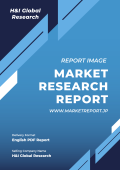目次
第1章 グローバルバイオ接着剤市場レポートの範囲と方法論
1.1. 研究目的
1.2. 研究方法論
1.2.1. 予測モデル
1.2.2. デスクリサーチ
1.2.3. トップダウンとボトムアップアプローチ
1.3. 研究属性
1.4. 研究の範囲
1.4.1. 市場定義
1.4.2. 市場セグメンテーション
1.5. 研究の仮定
1.5.1. 包含と除外
1.5.2. 制限事項
1.5.3. 調査対象期間
第2章 執行要約
2.1. CEO/CXOの視点
2.2. 戦略的洞察
2.3. ESG分析
2.4. 主要な発見
第3章 グローバルバイオ接着剤市場動向分析
3.1. グローバルバイオ接着剤市場を形作る市場要因(2024–2035)
3.2. 成長要因
3.2.1. 持続可能で環境に優しい接着剤ソリューションの需要増加
3.2.2. バイオベース製品および低VOC製品に対する規制支援
3.3. 制約
3.3.1. 一部のバイオ接着剤配合物の熱・水耐性の限界
3.3.2. 合成接着剤と比較した高い製造コスト
3.4. 機会
3.4.1. 医療、包装、個人用ケア業界における応用範囲の拡大
3.4.2. 接着性能向上のためのバイオテクノロジーの進展
第4章 グローバルバイオ接着剤産業分析
4.1. ポーターの5つの力モデル
4.1.1. 購入者の交渉力
4.1.2. 供給者の交渉力
4.1.3. 新規参入の脅威
4.1.4. 代替品の脅威
4.1.5. 競合企業の競争
4.2. ポーターの5つの力予測モデル(2024–2035)
4.3. PESTEL分析
4.3.1. 政治
4.3.2. 経済的
4.3.3. 社会
4.3.4. 技術的
4.3.5. 環境
4.3.6. 法的
4.4. 主要な投資機会
4.5. 主要な成功戦略(2025年)
4.6. 市場シェア分析(2024–2025)
4.7. グローバル価格分析と動向(2025年)
4.8. 分析家の推奨事項と結論
第5章. グローバルバイオ接着剤市場規模と予測(タイプ別)2025–2035
5.1. 市場概要
5.2. グローバルバイオ接着剤市場パフォーマンス – 潜在分析(2025年)
5.3. 植物由来
5.3.1. 主要国別内訳推計と予測(2024–2035)
5.3.2. 地域別市場規模分析(2025年~2035年)
5.4. 動物由来
5.4.1. 主要国別市場規模推計と予測(2024年~2035年)
5.4.2. 地域別市場規模分析、2025–2035
第6章. グローバルバイオ接着剤市場規模と予測(用途別)、2025–2035
6.1. 市場概要
6.2. パッケージングおよび紙
6.3. 建設
6.4. 木工
6.5. 個人用ケア
6.6. 医療
第7章. グローバルバイオ接着剤市場規模と予測(最終用途別)2025–2035
7.1. 市場概要
7.2. 医療
7.3. 建設
7.4. パッケージング
7.5. 自動車
7.6. その他
第8章. グローバルバイオ接着剤市場規模と地域別予測(2025年~2035年)
8.1. 地域別市場概要
8.2. 主要なリーダー企業と新興国
8.3. 北米バイオ接着剤市場
8.3.1. アメリカ合衆国
8.3.1.1. 製品タイプ別市場規模と予測(2025–2035年)
8.3.1.2. 用途別市場規模と予測(2025年~2035年)
8.3.2. カナダ
8.3.2.1. 製品タイプ別市場規模と予測(2025年~2035年)
8.3.2.2. 用途別市場規模と予測(2025年~2035年)
8.4. 欧州バイオ接着剤市場
8.4.1. イギリス
8.4.2. ドイツ
8.4.3. フランス
8.4.4. スペイン
8.4.5. イタリア
8.4.6. 欧州その他
8.5. アジア太平洋地域バイオ接着剤市場
8.5.1. 中国
8.5.2. インド
8.5.3. 日本
8.5.4. オーストラリア
8.5.5. 韓国
8.5.6. アジア太平洋地域その他
8.6. ラテンアメリカバイオ接着剤市場
8.6.1. ブラジル
8.6.2. メキシコ
8.7. 中東・アフリカバイオ接着剤市場
8.7.1. アラブ首長国連邦
8.7.2. サウジアラビア
8.7.3. 南アフリカ
8.7.4. 中東・アフリカその他の地域
第9章 競合分析
9.1. 主要な市場戦略
9.2. 3M社
9.2.1. 概要
9.2.2. 主要幹部
9.2.3. 会社の概要
9.2.4. 財務実績(データ入手状況により異なります)
9.2.5. 製品/サービスポートフォリオ
9.2.6. 最近の動向
9.2.7. 市場戦略
9.2.8. SWOT分析
9.3. ヘンケルAG & Co. KGaA
9.4. アルケマ・グループ
9.5. アシュランド・グローバル・ホールディングス・インク
9.6. シカ AG
9.7. デュポン・デ・ネムールズ・インク
9.8. ダニマー・サイエンティフィック
9.9. パラメルト・ビー・ブイ
9.10. ダウ・インク
9.11. エコシンセティックス・インク
9.12. バイオアドヘシブ・アライアンス株式会社
9.13. ヤパレックス・ビー・ブイ
9.14. クライオライフ・インク
9.15. イングレディオン・インコーポレイテッド
9.16. ハンツマン・コーポレーション
9.12. バイオアドヘシブ・アライアンス株式会社
表の一覧
表1. グローバルバイオ接着剤市場、レポートの範囲
表2. グローバルバイオ接着剤市場の見積もりおよび予測(地域別)2024–2035
表3. グローバルバイオ接着剤市場規模推計と予測(タイプ別)2024–2035
表4. グローバルバイオ接着剤市場規模推計と予測(用途別)2024–2035
表5. グローバルバイオ接着剤市場規模推計と予測(最終用途別)2024–2035
表6. 米国バイオ接着剤市場規模予測(2024~2035年)
表7. カナダバイオ接着剤市場規模予測(2024年~2035年)
表8. イギリスバイオ接着剤市場規模予測(2024~2035年)
表9. ドイツのバイオ接着剤市場推定値と予測、2024–2035
表10. フランス バイオ接着剤市場規模予測(2024–2035年)
表11. スペインのバイオ接着剤市場規模予測(2024~2035年)
表12. イタリアのバイオ接着剤市場規模予測(2024年~2035年)
表13. 欧州その他の地域バイオ接着剤市場規模予測(2024年~2035年)
表14. 中国バイオ接着剤市場規模推計と予測(2024年~2035年)
表15. インドのバイオ接着剤市場規模推計と予測(2024年~2035年)
表16. 日本のバイオ接着剤市場規模推計と予測(2024年~2035年)
表17. オーストラリアのバイオ接着剤市場規模予測(2024年~2035年)
表18. 韓国バイオ接着剤市場規模予測(2024年~2035年)
表19. アジア太平洋地域(その他)バイオ接着剤市場規模推計と予測(2024~2035年)
表20. ブラジルバイオ接着剤市場規模推計と予測(2024年~2035年)
表21. メキシコバイオ接着剤市場規模推計と予測(2024年~2035年)
表22. アラブ首長国連邦(UAE)バイオ接着剤市場規模推計と予測(2024~2035年)
表23. サウジアラビアのバイオ接着剤市場規模予測(2024年~2035年)
表24. 南アフリカ バイオ接着剤市場規模推計と予測(2024年~2035年)
表25. 中東・アフリカその他の地域バイオ接着剤市場規模推計と予測(2024年~2035年)
図表一覧
図1. グローバルバイオ接着剤市場、調査方法論
図2. グローバルバイオ接着剤市場、市場推計手法
図3. グローバル市場規模推計および予測方法
図4. グローバルバイオ接着剤市場、2025年の主要動向
図5. グローバルバイオ接着剤市場、成長見通し 2024–2035
図6. グローバルバイオ接着剤市場、ポーターの5つの力モデル
図7. グローバルバイオ接着剤市場、PESTEL分析
図8. グローバルバイオ接着剤市場、バリューチェーン分析
図9. バイオ接着剤市場(タイプ別)、2025年と2035年
図10. バイオ接着剤市場(用途別)、2025年と2035年
図11. バイオ接着剤市場(エンドユーザー別)、2025年と2035年
図12. 北米バイオ接着剤市場、2025年と2035年
図13. 欧州バイオ接着剤市場、2025年と2035年
図14. アジア太平洋地域バイオ接着剤市場、2025年および2035年
図15. ラテンアメリカバイオ接着剤市場、2025年および2035年
図16. 中東・アフリカバイオ接着剤市場、2025年と2035年
図17. グローバルバイオ接着剤市場、企業別市場シェア分析(2025年)
Chapter 1. Global Bioadhesives Market Report Scope & Methodology
1.1. Research Objective
1.2. Research Methodology
1.2.1. Forecast Model
1.2.2. Desk Research
1.2.3. Top Down and Bottom-Up Approach
1.3. Research Attributes
1.4. Scope of the Study
1.4.1. Market Definition
1.4.2. Market Segmentation
1.5. Research Assumption
1.5.1. Inclusion & Exclusion
1.5.2. Limitations
1.5.3. Years Considered for the Study
Chapter 2. Executive Summary
2.1. CEO/CXO Standpoint
2.2. Strategic Insights
2.3. ESG Analysis
2.4. Key Findings
Chapter 3. Global Bioadhesives Market Forces Analysis
3.1. Market Forces Shaping The Global Bioadhesives Market (2024–2035)
3.2. Drivers
3.2.1. Rising demand for sustainable and eco-friendly adhesive solutions
3.2.2. Regulatory support for bio-based and low-VOC products
3.3. Restraints
3.3.1. Limited thermal and water resistance in some bioadhesive formulations
3.3.2. High cost of production compared to synthetic adhesives
3.4. Opportunities
3.4.1. Expanding application in medical, packaging, and personal care industries
3.4.2. Advancements in biotechnology to enhance adhesive performance
Chapter 4. Global Bioadhesives Industry Analysis
4.1. Porter’s 5 Forces Model
4.1.1. Bargaining Power of Buyer
4.1.2. Bargaining Power of Supplier
4.1.3. Threat of New Entrants
4.1.4. Threat of Substitutes
4.1.5. Competitive Rivalry
4.2. Porter’s 5 Force Forecast Model (2024–2035)
4.3. PESTEL Analysis
4.3.1. Political
4.3.2. Economical
4.3.3. Social
4.3.4. Technological
4.3.5. Environmental
4.3.6. Legal
4.4. Top Investment Opportunities
4.5. Top Winning Strategies (2025)
4.6. Market Share Analysis (2024–2025)
4.7. Global Pricing Analysis and Trends 2025
4.8. Analyst Recommendation & Conclusion
Chapter 5. Global Bioadhesives Market Size & Forecasts by Type 2025–2035
5.1. Market Overview
5.2. Global Bioadhesives Market Performance – Potential Analysis (2025)
5.3. Plant-based
5.3.1. Top Countries Breakdown Estimates & Forecasts, 2024–2035
5.3.2. Market Size Analysis, by Region, 2025–2035
5.4. Animal-based
5.4.1. Top Countries Breakdown Estimates & Forecasts, 2024–2035
5.4.2. Market Size Analysis, by Region, 2025–2035
Chapter 6. Global Bioadhesives Market Size & Forecasts by Application 2025–2035
6.1. Market Overview
6.2. Packaging & Paper
6.3. Construction
6.4. Woodworking
6.5. Personal Care
6.6. Medical
Chapter 7. Global Bioadhesives Market Size & Forecasts by End-User 2025–2035
7.1. Market Overview
7.2. Healthcare
7.3. Construction
7.4. Packaging
7.5. Automotive
7.6. Others
Chapter 8. Global Bioadhesives Market Size & Forecasts by Region 2025–2035
8.1. Regional Market Snapshot
8.2. Top Leading & Emerging Countries
8.3. North America Bioadhesives Market
8.3.1. U.S.
8.3.1.1. Type Breakdown Size & Forecasts, 2025–2035
8.3.1.2. Application Breakdown Size & Forecasts, 2025–2035
8.3.2. Canada
8.3.2.1. Type Breakdown Size & Forecasts, 2025–2035
8.3.2.2. Application Breakdown Size & Forecasts, 2025–2035
8.4. Europe Bioadhesives Market
8.4.1. UK
8.4.2. Germany
8.4.3. France
8.4.4. Spain
8.4.5. Italy
8.4.6. Rest of Europe
8.5. Asia Pacific Bioadhesives Market
8.5.1. China
8.5.2. India
8.5.3. Japan
8.5.4. Australia
8.5.5. South Korea
8.5.6. Rest of Asia Pacific
8.6. Latin America Bioadhesives Market
8.6.1. Brazil
8.6.2. Mexico
8.7. Middle East and Africa Bioadhesives Market
8.7.1. UAE
8.7.2. Saudi Arabia
8.7.3. South Africa
8.7.4. Rest of Middle East & Africa
Chapter 9. Competitive Intelligence
9.1. Top Market Strategies
9.2. 3M Company
9.2.1. Company Overview
9.2.2. Key Executives
9.2.3. Company Snapshot
9.2.4. Financial Performance (Subject to Data Availability)
9.2.5. Product/Services Port
9.2.6. Recent Development
9.2.7. Market Strategies
9.2.8. SWOT Analysis
9.3. Henkel AG & Co. KGaA
9.4. Arkema Group
9.5. Ashland Global Holdings Inc.
9.6. Sika AG
9.7. DuPont de Nemours, Inc.
9.8. Danimer Scientific
9.9. Paramelt B.V.
9.10. Dow Inc.
9.11. EcoSynthetix Inc.
9.12. Bioadhesive Alliance Inc.
9.13. Yparex B.V.
9.14. Cryolife Inc.
9.15. Ingredion Incorporated
9.16. Huntsman Corporation











